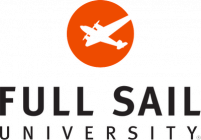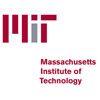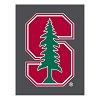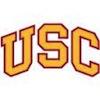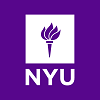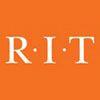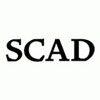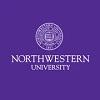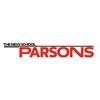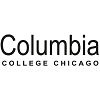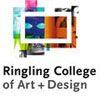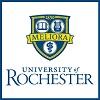In May of this year, University of Southern California (USC) President Carol L. Folt announced a $1 billion-plus initiative that will integrate computing throughout education and research to enhance digital literacy for all students. Known as Frontiers of Computing, the initiative will be the single largest comprehensive academic initiative in the USC’s history. While the initiative will benefit students, faculty, and more across disciplines, the focus will be on AR/VR, gaming, robotics, AI, machine learning, data science, and block chain.
Frontiers in Computing will also include the USC School of Advanced Computing, which will be headquartered in a seven-story, 116,000 square-foot facility—the Dr. Allen and Charlotte Ginsburg Human-Centered Computation Hall. Currently under construction, the building will formally open in fall 2024. In the meantime, students who would like to study AR/VR can enroll in a variety of programs at USC, beginning with options housed in the Thomas Lord Department of Computer Science within Viterbi School of Engineering. Programs include a BS, MS, and PhD. in Computer Science (CS), with access to courses such as Augmented, Virtual & Mixed Reality; Intermediate 3D Modeling and Procedural Asset Pipelines; Professional C++; Object-Oriented Programming; Digital Infrastructure; Programming in Python; Computational Thinking Through Programming; Mobile Game Development; Technical Character Animation for Games; and Programming Graphical User Interfaces.
The School of Cinematic Arts (SCA) at USC also has a number of options for students interested in studying AR/VR. Founded in collaboration with the Academy of Motion Picture Arts and Sciences in 1929, and one of USC’s most recognized schools, Cinematic Arts houses the Interactive Media and Games Division, which has an Interactive Entertainment BA, Immersive Media Minor, and Interactive Media MFA.
The interdisciplinary Immersive Media Minor is open to all undergraduate students at USC. The program explores virtual reality and how to create content effectively. Students have the opportunity choose elective courses within the same area to fit their goals or they can enhance the curriculum by choosing elective courses from two separate areas. BA students may also study AR/VR through the USC Institute for Creative Technologies (USC ICT), which houses the Mixed Reality Lab (MxR) and the ICT Virtual Humans Group.
The MxR Lab works with the Interactive Media and Games Division in areas such as Human-Computer Interaction (HCI) and immersive systems for education and training simulations using AR/VR.
The ICT Virtual Humans Group conducts research in areas such as Integrated Virtual Humans, Character Animation and Simulation, MultiModal Communication, Natural Language Processing, Cognitive Architecture, and Emotion.
Elective examples for the Interactive Entertainment BA Program include Storytelling for Virtual and Augmented Reality, Alternative Control Workshop, Video Game Programming, Visual Effects, Computer Graphics, Interactive Entertainment, Science, and Healthcare, and Audio Expression. Examples of required courses include Creative Production in Virtual Reality, Experiments in Immersive Design, C++ Programming, and 3D Computer Animation.
The Interactive Entertainment BA Program at USC School of Cinematic Arts explores AAA (triple-A) game development processes and experimental and indie genres from virtual and alternate realities to meaningful and expressive games. Course examples include Reality Starts Here, Producing Interactive Projects, Interface Design for Games, Alternative Control Workshop, Experimental Game Topics, Programming in Python, Interactive Entertainment, and Game Design Workshop.
The Interactive Media MFA is a competitive program that admits just 15 students in the Fall semester only. Program features include the opportunity to take twelve 500-level elective units, access to state-of-the-art computer and digital production facilities, and a mandatory internship or summer job in a professional environment.
MFA students will take courses such as Experiments in Interactivity I & II, Foundations of Artificial Intelligence (AI), Interactive Design Production, Motion Capture Fundamentals, and Tangible and Spatial Computing. To enhance this coursework, like undergraduate students, MFA students can study AR/VR through USC ICT.
A final option for students interested in pursuing a career in AR/VR is the Extended Reality (XR) Design and Development Minor. Provided through the USC Iovine and Young Academy, the Minor can be added to Academy programs such as the BS in Arts, Technology and the Business of Innovation or the Integrated Design, Business Technology MS. Course examples for the Minor include Extended Reality Design, Digital Toolbox: Motion Graphics, Designing Live Experiences, Narrative Technology and the Human Experience, and Designing Digital Experiences.
USC recently launched the USC Working Group on Scholarly VR, AR, and 3D Modeling. The Group is sponsored by the Humanities in a Digital World Program at USC Dana and David Dornsife College of Letters, Arts and Sciences (the largest and oldest of the USC schools), and the Ahmanson Lab at the USC Sidney Harman Academy for Polymathic Study. Students in all USC programs benefit from participation in WG’s workshops, lectures, projects, and discussions. Past workshops have explored Mobile Augmented Reality, Immersive 3D Setting Design, and utilizing AR toolkits and platforms such as Niantic (Pokémon Go), Snap (Snapchat lenses), and others.
Graduates of the Computer Science, Interactive, Immersive Media, and Iovine and Young Programs at University of Southern California have been hired at companies and organizations such as Boeing, Oracle, Lockheed Martin, Google, DreamWorks Animation, the U.S. Army and Navy, Tesla, Department of Homeland Security, Amazon, Sony, Microsoft, Discovery+, Aerojet Rocketdyne, Walt Disney Company, Branded Entertainment Network, Gilead Sciences, VIZIO, Yahoo, Vayu Technology, Disneyland Parks, Disneyland Resorts, United Airlines, U.S. Customs and Border Protection, FORD, AT&T, Meta, and the Federal Aviation Administration.
Established in 1880, University of Southern California is the largest private sector employer in Los Angeles. Serving 49,500 students, USC houses 23 schools and divisions. More than 600 graduate and professional programs are provided. The University of Southern California is accredited by the Western Association of Schools and Colleges Senior College and University Commission (WSCUC).
